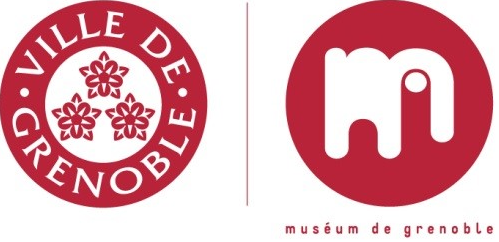
Grenoble Natural History Museum
Since its conception, the herbarium of the Grenoble Museum (GRM) has had a clear acquisition strategy, with a strong “alpine identity”. It constitutes a living heritage of the flora of the Dauphiné and the Alps, and has been the testimony of the work of regional botanists since the 18th century.
The existence of an herbarium within the Cabinet of Natural History has been established since 1801. Among the oldest pieces are those of Pierre Liottard, botanist from Grenoble (1728-1796) and friend of Dominique Villars (1745-1814).
Nowadays, the botanical collection of the Grenoble Museum mainly includes herbaria, for an estimated total of at least 300,000 pieces. The set is composed of about 200 collections of various sizes, mainly from the 19th and early 20th century. The plants displayed are mostly tracheophytes, some bryophytes are nevertheless present, lichens, algae and fungi are also represented albeit in much smaller number.
There is a strong scientific interest for this herbarium (taxonomy, ecology) that can still be further developed. Indeed, exchanges of information among botanists and the Grenoble Museum is paramount for the documentation and valorization of the collection, as it helps maintain the interest in the Herbarium. The substantial documentation associated to the collections, present in the Museum's library (manuscripts, correspondence, Flores), provide the means to best study the herbarium.
The most common types of herbaria comprised in the collections are :
- Referential herbaria, particularly those of Villars, Mutel, Arvet-Touvet which contain reference specimens or "types" for an estimated total of 1,500 pieces ;
- Historical herbaria, created by renown botanists, such Honnorat andVerlot for the alpine region, or Pellat, Nestler or Funck, at the national and European level ;
- Reference herbaria for the Dauphiné and the Rhone-Alpes region, such as those of Breistroffer, Ravaud, Chatenier… Some were gathered together and made into a regional herbarium, as they present a huge amount of information for the study of species’ distribution and variability ;
- General reference herbaria (France and other countries), such as the General Herbarium composed by the assimilation of various collections, related herbaria a (Breistroffer out of region…), and the Algeria herbarium (mainly Reboud and Schmitt).
The Algeria herbaria (Reboud and Schmitt) were attached and digitized within the framework of the e-ReColNat program. You can find the herbarium’s collection catalogue, as well as a presentation of the collections and the specimen records on the Museum of Grenoble ‘s collection portal.
Thus far, only the collection of Dominique Villars, and about 100 other reference specimens are presented online. The types inventory is in progress.
The Grenoble Museum does not lend the pieces of herbaria, but the person in charge of the botanical collections is available to answer the scientists’ requests (research for parts, high definition photos, consultation on the spot...) as quickly as possible.
Contact
Matthieu Lefebvre :matthieu.lefebvre@grenoble.fr
For further information:
- Muséum de Grenoble. (2017). *Etat des connaissances de l’Herbier du Muséum de Grenoble (GRM) *au 16 décembre 2016.
- Poncet, V., 2006. Matériaux pour l'histoire de la botanique dauphinoise. Le Journal de Botanique de la Société Botanique de France 35 : 2-88
- V. Poncet,* L'herbier Dominique Villars. Témoin de la flore du Dauphiné.* Série Inventaire des collections du Muséum de Grenoble, Édition Muséum d'histoire naturelle de la ville de Grenoble, 1999 : 1-200.

The Museum of Grenoble was founded in 1851, originating from the Natural History Cabinet founded by Dr. Gagnon, grandfather of Stendhal © Muséum de Grenoble

The GRM Herbarium of the Museum of Grenoble is kept in a secure reserve, with controlled temperature and hygrometry.
© Muséum de Grenoble

- Specialist of the genus Hieracium C. Arvet-Touvet (1841-1913) also described and named species among other genera.
© Muséum de Grenoble